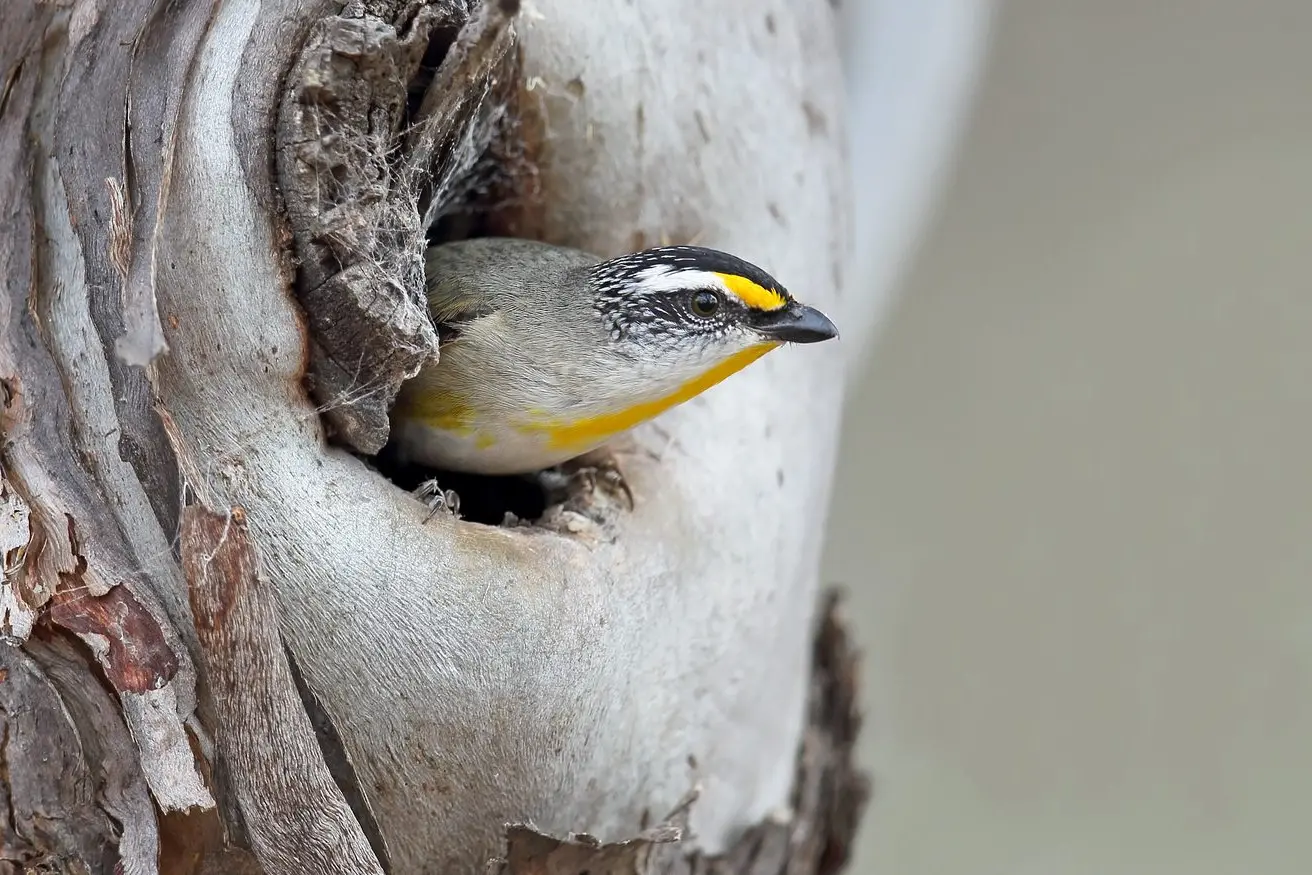PHOTO
Throughout the world in forested environments, there are often small birds which forage mainly for insects among the canopy foliage and help maintain the health of the trees.
In Australia, these birds mainly come from two families – the thornbills/gerygones, and the pardalotes.
Pardalotes only occur in Australia and they have evolved to be well-suited to ecosystems dominated by eucalyptus trees.
Their tiny size - no larger than a gum leaf - allow them to dangle from the smallest possible branchlets, and their short stubby bills have a tiny hooked tip which allows them to collect insects from relatively flat surfaces such as leaves and leaf stems.
Psyllid insects are common in Australian eucalypt woodlands - these tiny sap-suckers extract nutrients and moisture from leaves and they secrete a sugary substance, known as lerp, which dries and forms a protective cover over the insect.
Lerp and psyllid insects form the main diet of the Striated Pardalote, and given this species occurs right around Australia, they are very important in controlling numbers of these insects which, in severe infestations, can defoliate many trees.
There is considerable variation in plumage characteristics across the range of this species.
All birds have white eyebrows with a yellow spot in front of the eye, olive-grey backs and a white stripe in the wing.
Both male and female have similar plumage.
Young birds also resemble the adults, but are paler, particularly on the crown and face.
The Striated Pardalote is more common than people usually think because it is often overlooked due to its small size and treetop habits.
The first indication of the presence of this brightly coloured little bird is its call, an oft-repeated “tchip tchip”.
For a small bird, they have quite a voice.
During breeding season, Striated Pardalotes form pairs or small groups of up to six birds.
Their nest is constructed close to the ground, usually in a tree hollow or a tunnel, excavated in an earthen bank.
Locally, Striated Pardalotes can be found almost anywhere, though they are probably most common in red gums along our creeks and rivers.

